I think there is little doubt that the archive has become an increasingly important tool and theme in contemporary art praxis. One need only look at the extensive literature on the topic (of which I will, bibliographically perhaps, mention Mark Godfrey’s The Artist as Historian, Joan Gibbon’s Contemporary Art and Memory, the numerous compilations of texts grouped around topics such as memory, ruins, and archives from the series Documents of Contemporary Art, and, of course, Dieter Roelstraete’s coining of the term historiographic turn, for this trend). There is therefore little to be gained by trying to fit the exhibition at MeetFactory entitled Laughter and Forgetting, curated by Olga Ștefan, into this global trend. This can be taken for granted, and not just because most of the works exhibited have the archive as a starting point and all of them deal with themes of memory, forgetting, oppression (themes with which Olga Ștefan has dealt in the past), etc., but also because of the exhibitions meta-archival dimension, it being the result not of a commission, but of the curator’s sifting through the world-archive of contemporary art and sorting the findings thematically.
Laughter and Forgetting was initially part of Bucharest Art Week 2015, where it encompassed, on the one hand the exhibited works of sixteen artists, both foreign and Romanian and, on the other, a series of lectures and film screenings that spanned the seven days of the event. The event enjoyed a central location, extensive coverage by Artslant, and a number of big names on the international scene, such as Hito Steyerl and Sophie Calle. The exhibition was anchored in the local, with three Romanian artists exhibited in the opening exhibition (a version of which has been transported, along with the name, to MeetFactory in Prague), discussions and screenings which put side by side and in relationship Romanian and international events, and the unearthing of works and documentation of Romanian artistic groups, among which Atelier 35 Oradea and Kinema Ikon. The goal was to create a dialogue between local experience and a multitude of international stories, all tied together thematically, and all referring back to the former. The seven-day event echoed in structure (seven loosely yet meaningfully connected parts) and themes Milan Kundera’s 1979 Book of Laughter and Forgetting, from which the exhibition gets its title.
It can be argued therefore that the version at MeetFactory loses some of its initial structural design, being set up as a standalone exhibition (with two unintentionally related documentary screenings). The dialogue is decentered by evening out the number of artists representing a single nationality. Dan Acostioaei therefore remains the only Romanian presence in the show.
The exhibition is dominated by verticality, as most of the works are displayed on screens, even more so than the Romanian one, due to the size of the screens and their being hung on the walls, and the geometry of the gallery. Architect Lukáš Machalický makes his way around the inherent spatial difficulties by creating two artificial walls made of white vertical wooden beams, close enough together so that the screens can be attached to them safely yet far enough apart (some of them) to allow the visitor to pass through. These semitransparent borders inevitably impact the reception. For example, while watching Nedko Solakov’s video Replacement, showing the area of the Georgi Dimitrov Mausoleum in the present, while superimposing photos of its erection, life, and destruction, one can see just behind it Dread Scott’s idyllic memorial to three communist revolutions – Let 100 Flowers Blossom. While ideologically contrasting, both works can be tied in terms of wanting to preserve (or (re)create, depending on your degree of skepticism) a fragment of history. One could argue that Solakov’s work acts merely as a document, showing archive photos in contrast with the contemporary landscape, which he film himself, while Dred Scotts aims to immortalize, to erect a monument. Yet that is a difference that should immediately come into question, as, as Jacques Le Goff reminds us, the archival document is no less vulnerable to ideology than the monument.
The antithesis, forgetting, Besides Kundera’s use, in the exhibition it receives a Freudian interpretation as well. Agnieszka Polska’s video The Forgetting of Proper Names, an animated collage that accompanies a reading of an excerpt of Freud’s eponymous essay, in addition to recontextualizing the works in the video, as the curatorial statement reads, recontextualizes the other works as well, drawing attention to the hidden working of repression, of which the forgetting of proper names is just a noticeable manifestation.
The viewing experience can be said to resemble a search through an archive, just because of the sheer volume of information: a total of almost two hours of footage and hundreds of pages, in Sophie Calle’s and Kateřina Šedá’s books, in Himali Singh Soin’s handwritten letters, in Dorothy Iannone illustrated book. The difficult task is to offer this impression without running into the inherent problem of any archive: information that is never accessed, that escapes from each search. Each individual story is lost in a multiplicity of voices. The two documentaries screened fit into the theme as well, in the foreground of political tension (which are however never the focus), showing individual dramas, just as all the voices collected by Sophie Calle in her book Exquisite Pain respond to the common question of the saddest experience of one’s life, as an exercise of coming to terms with the past, not by forgetting, but, on the contrary, by repetition, every response being paired with a description of the same moment by the artist.
Laughter come off as critical (demonic, for Kundera) of censorship culture (the grotesque nudity in Dorothy Iannone’s The Story of Bern) or of consumer capitalism and the self (Nedko Solakov’s present-day body image in Nostalgia), yet laughter never intrudes upon the past (Iannone’s story, for example, apart from the vulgarity, tries to be as factually accurate as possible). Laughter is thoroughly liberating in the critical way. Yet it is certainly underrepresented (compared to Kundera’s work as well), as most works adopt a serious tone and pertain to serious topics. If laughter is associated with forgetting the traumatic and absurd present or past, with dancing and literally floating towards the sky, representing it would be to contradict the very purpose of the archive, which is to preserve memory (one could see a tension between immediate solace and the duty of remembrance).
Yet video acts differently as a medium of recording than paper. The nature of the media makes the exclusivity of the document/ monument a meaningless concept, a screening at the gallery and at home being just as authentic. Seeing how Clemens von Wedemeyer and Hito Steyerl’s videos are freely available online, what must come under scrutiny is how they interact with the rest of the works and why the exhibition space matters (and whether it would make a difference if all works were available online). This is a media question which this exhibition starts to answer – unlike the taxonomy of the archive, the signs of intelligent design are all around us – the curator plays with the building blocks that are the work and weaves a more complex narrative with them, one that does not privilege the post-communist experience, even though that is the one with which most visitors would identify with the most.
Estrangement under oppressive systems is not explicitly stated, but is implicit in the multilingualism of the works. Katerina Seda’s text and the words on her grandmother’s drawings (Normal Life) are only in Czech, yet even for the non-Czech speaker, the communist and post-communist iconography that the latter make use of would be easy to make sense even in the absence of a translation. The same can be said for Clemens von Wedemeyer’s theatrical reenactment of a line in front of the German embassy in Moscow. The unsubtitled dialogue in Russian is made to convey just this sense of alienation that the artist himself felt upon his encounter. Even with this deliberate locking out of some viewers, the symbols, despite the film being shot in a forest, transpire in all their significations and associations: the long lines, the disembodied voice making announcements, the metal detector (echoed in the open borders that are the exhibition room’s temporary walls) and figures of authority etc. Adding another layer to this linguistic interaction, the available transcription of the dialogue is in German.
A common universal story of oppression and shame is therefore weaved, be it in Hito Steyerl’s bondage shoot (Lovely Andrea) or in the desecration of Christian Palestinian graves (Dor Guez – 40 days) or of the discourse-contaminated memories of Jewish presence in Iași (Dan Acostioaei – Confessional), which, though tell of very different social experience, tap into something more fundamental. Yet it is those closest to the socio-political epicenter of the exhibition who will face the greatest symbolic identification. In the end, aesthetic merits have less of a say here, in favor of a cathartic collective experience for those directly affected and a monument to memory for everyone else.
Laughter and Forgetting was at Meetfactory between September 8 – November 9, 2016.
Curator: Olga Ștefan
Artists: Esther Shalev-Gerz, Dor Guez, Clemens Von Wedemeyer, Agnieszka Polska, Sarah Sweeney, Nedko Solakov, Himali Singh Soin, Sophie Calle, Kateřina Šedá, Hito Steyerl, Dorothy Iannone, Dread Scott, Adam Vačkář, Dan Acostioaei
Exhibition architect: Lukáš Machalický
POSTED BY
Rareș Grozea
Rareș Grozea (born 1995) got his B.A. in Art History from the University of Bucharest and is currently studying for a Master's in Berlin....


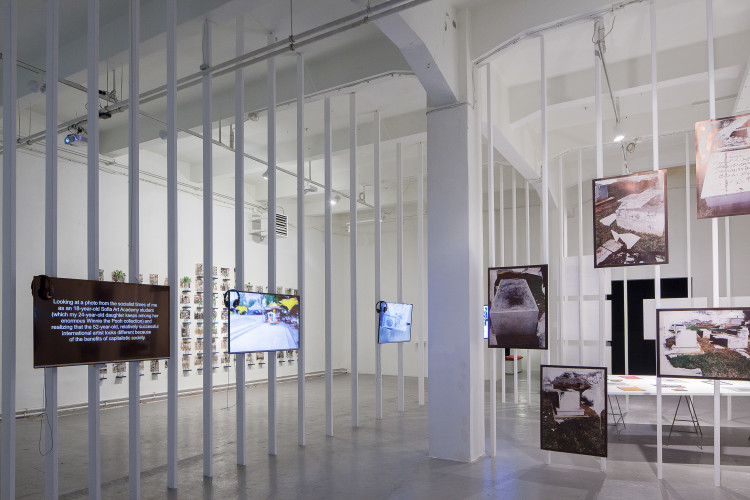
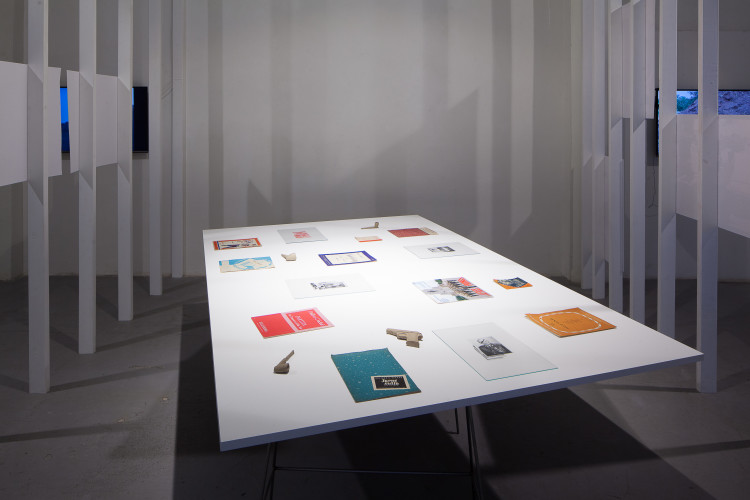
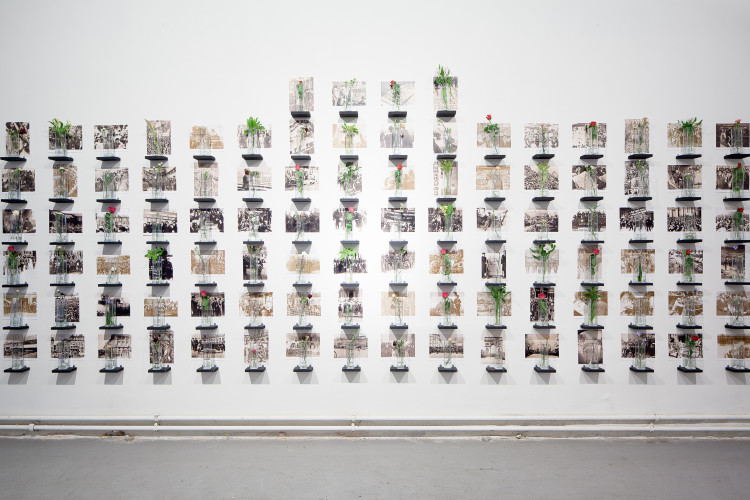
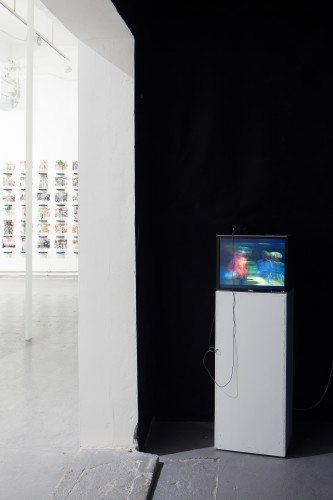
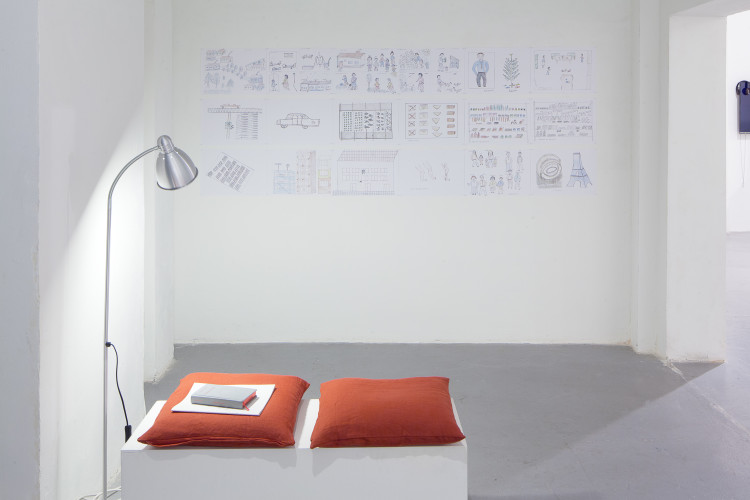
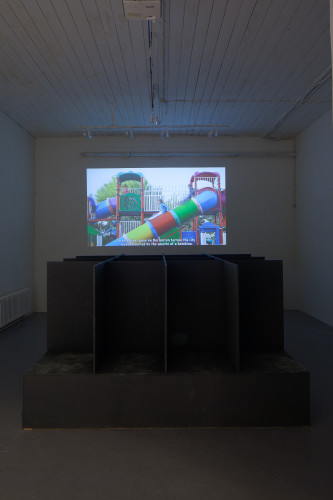

Comments are closed here.